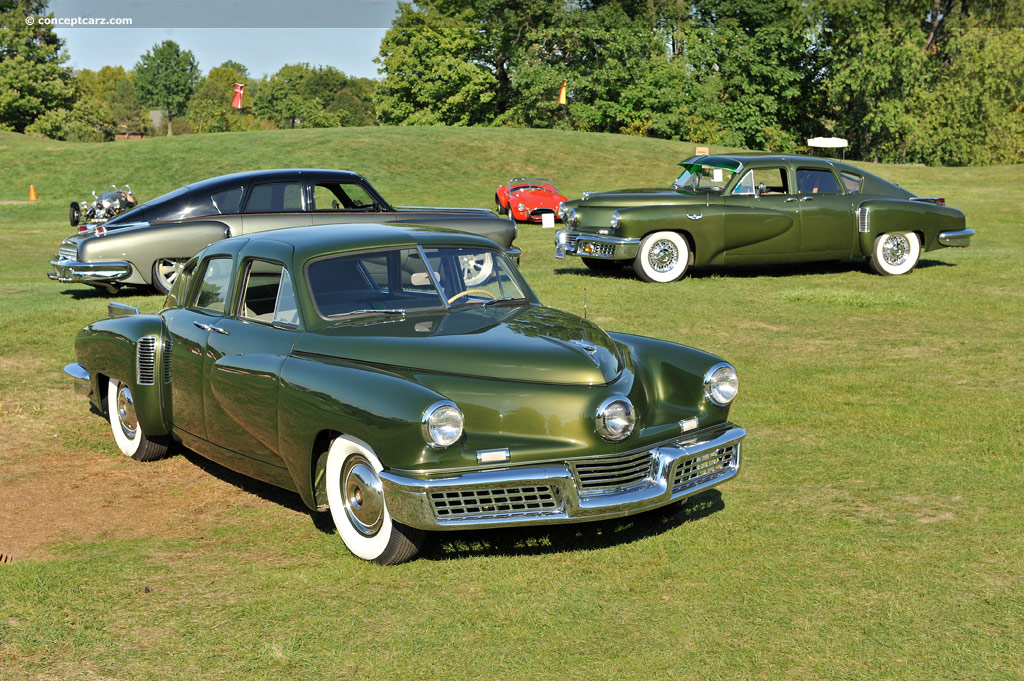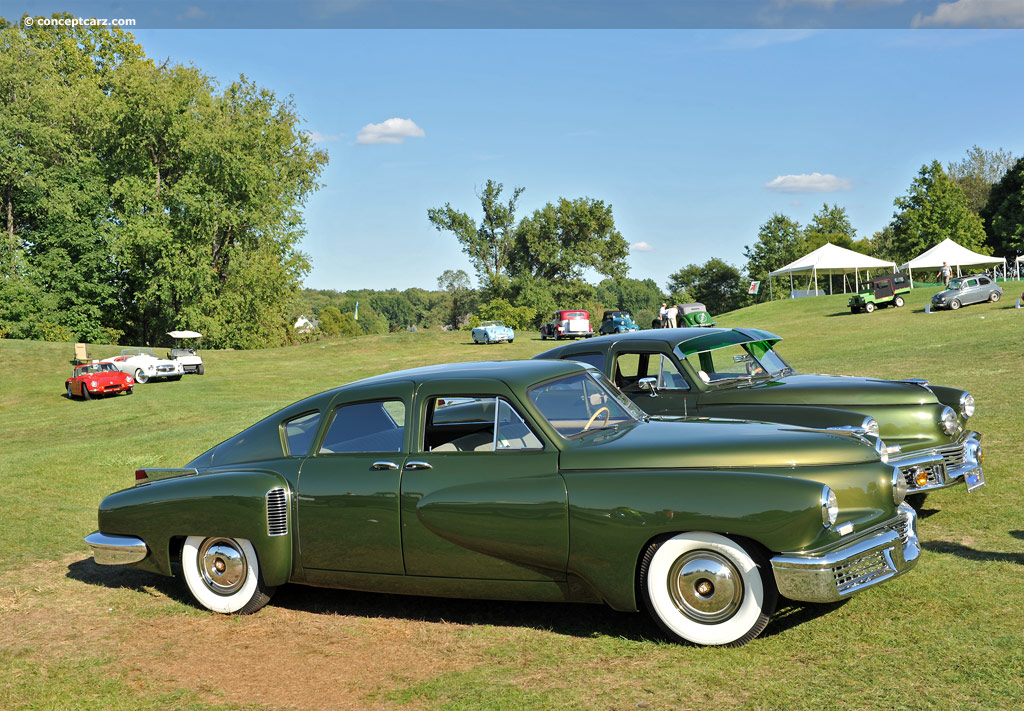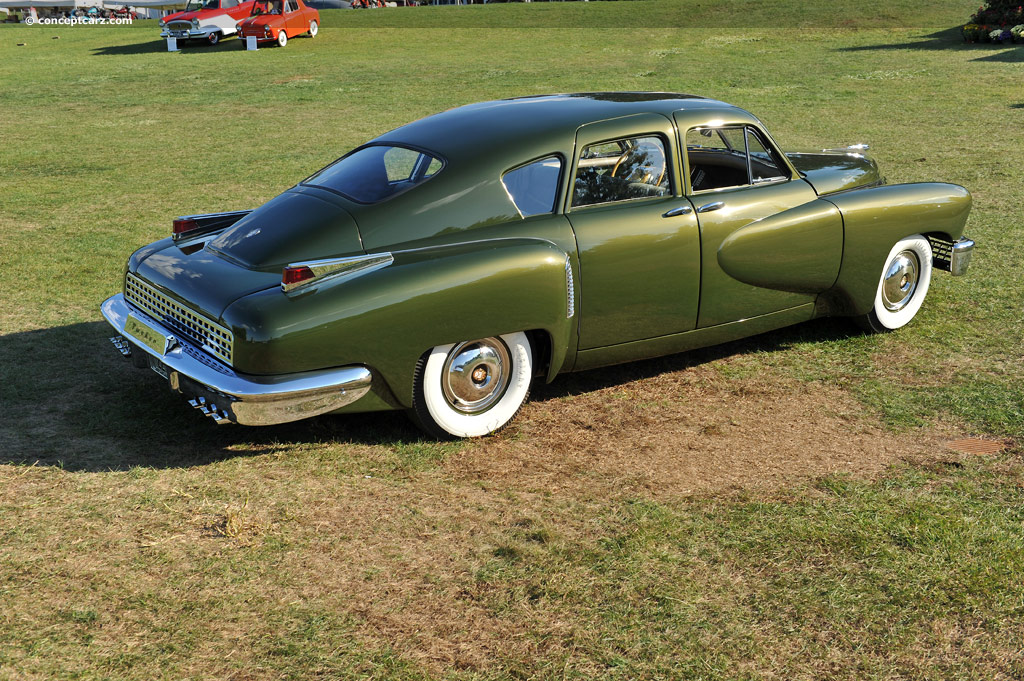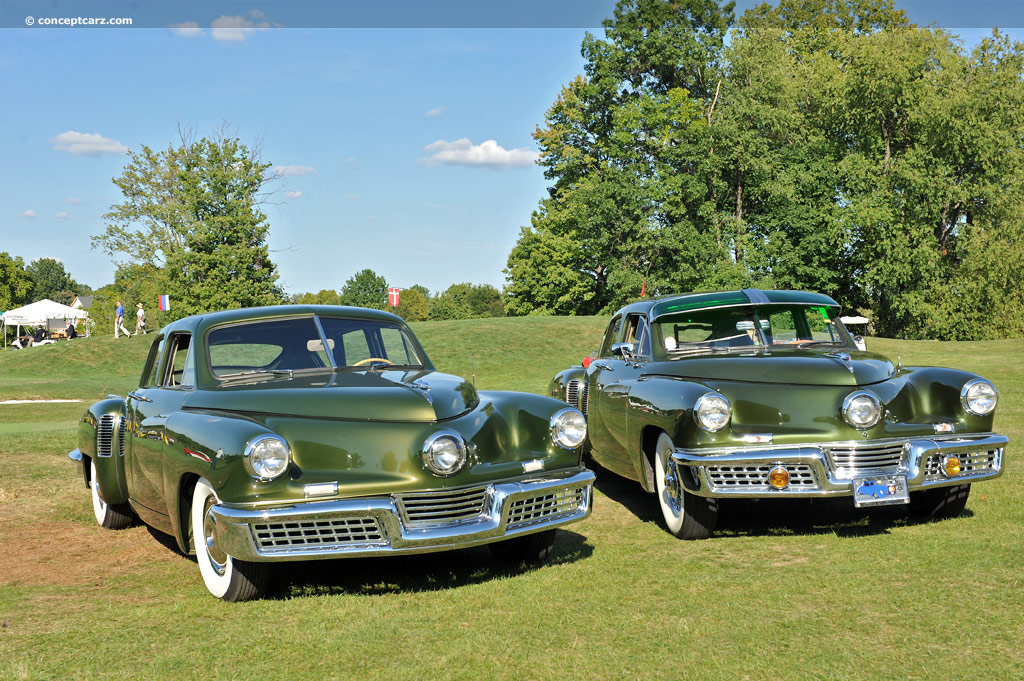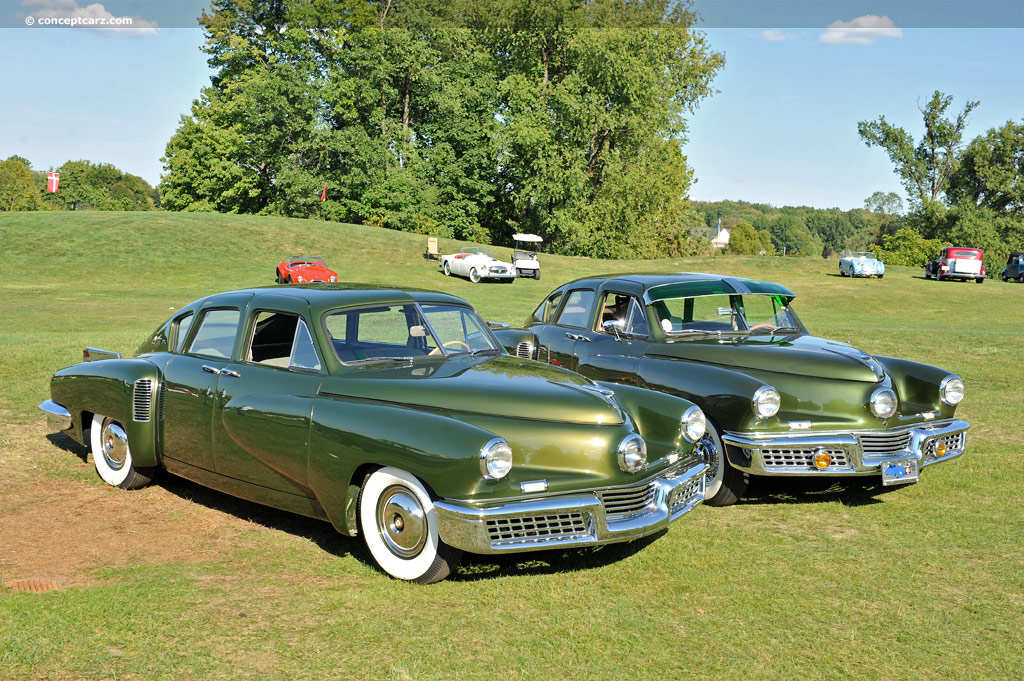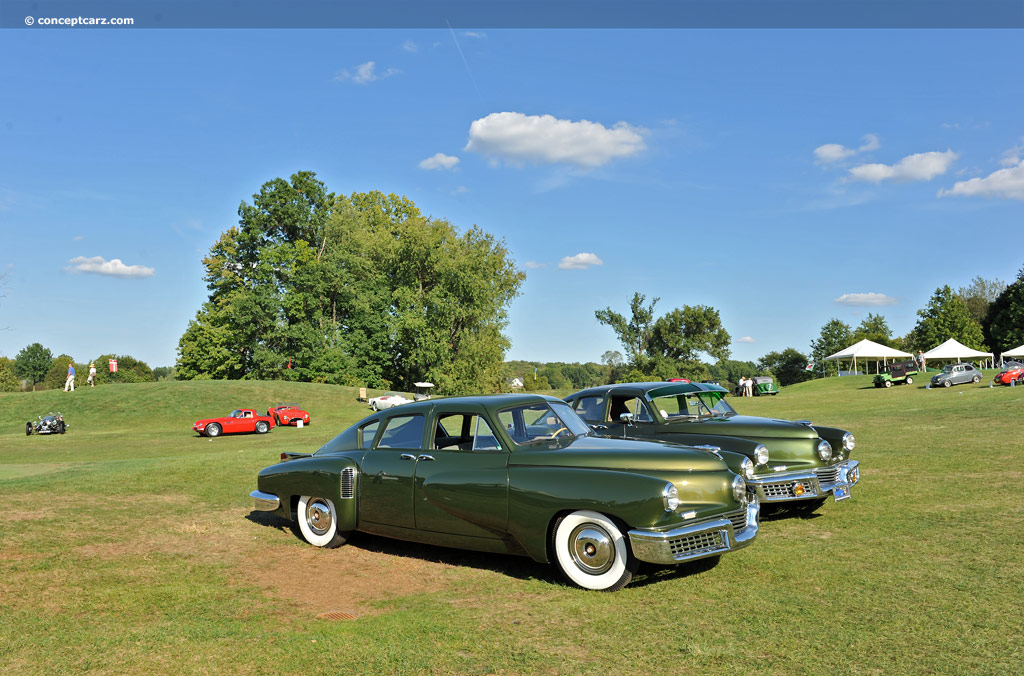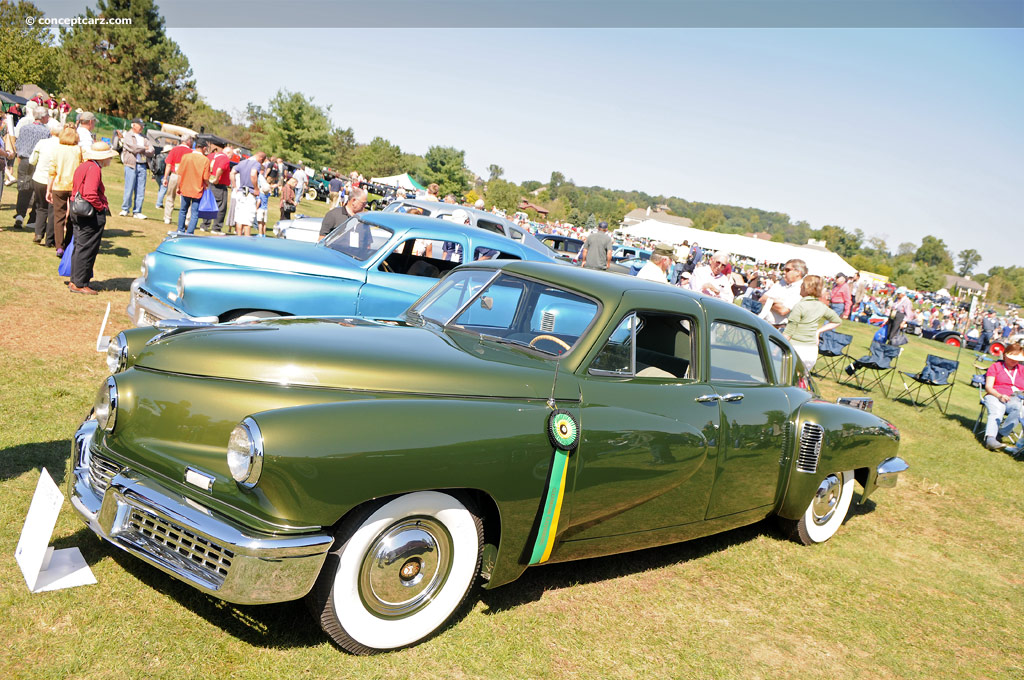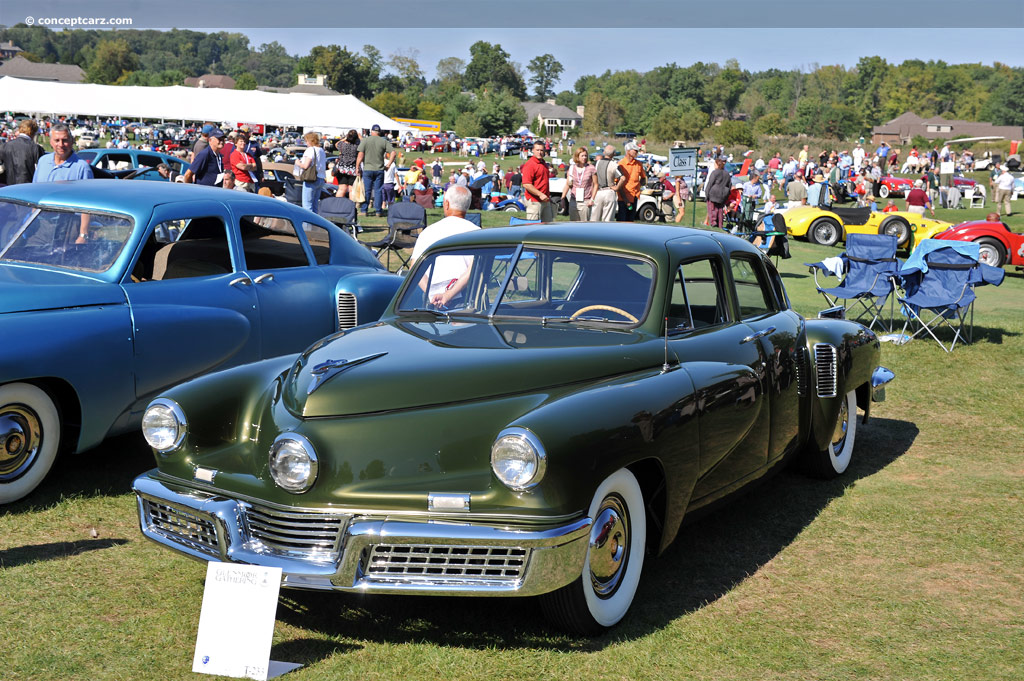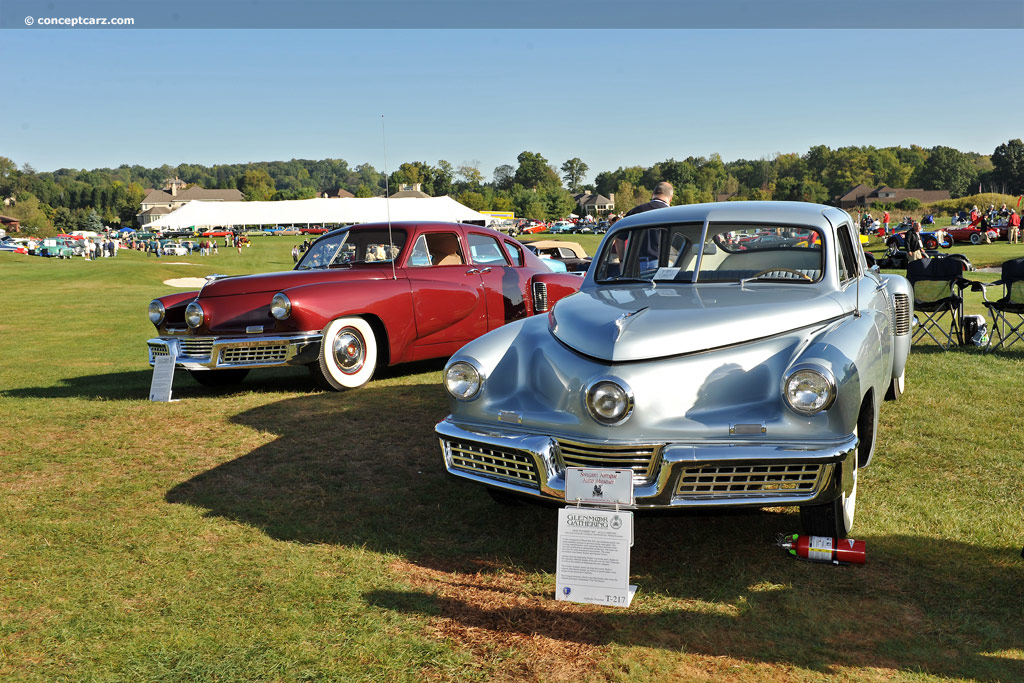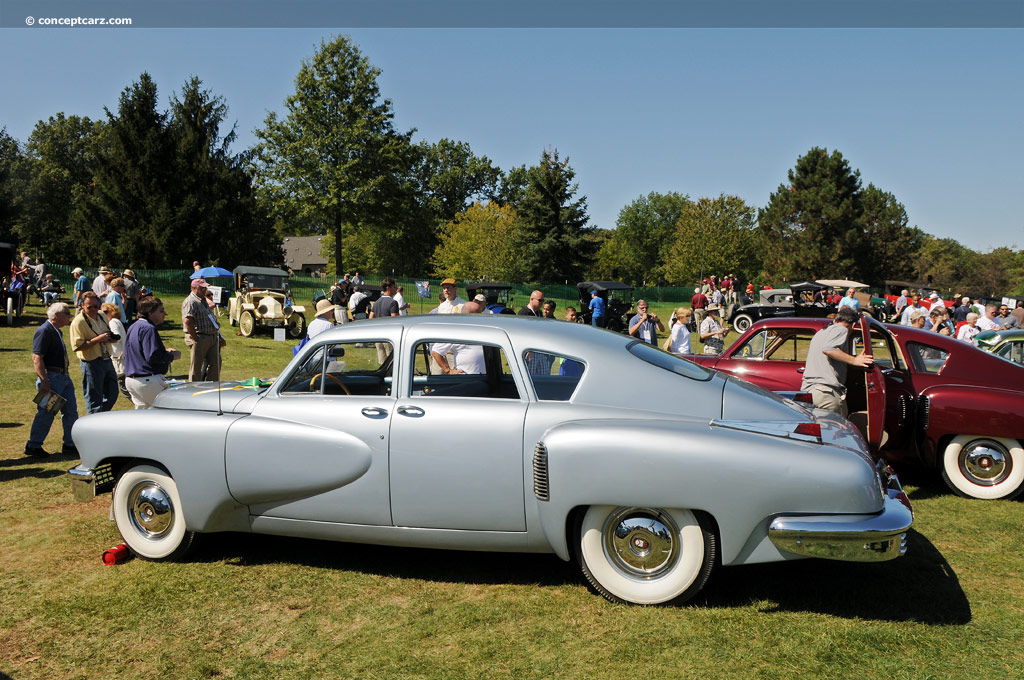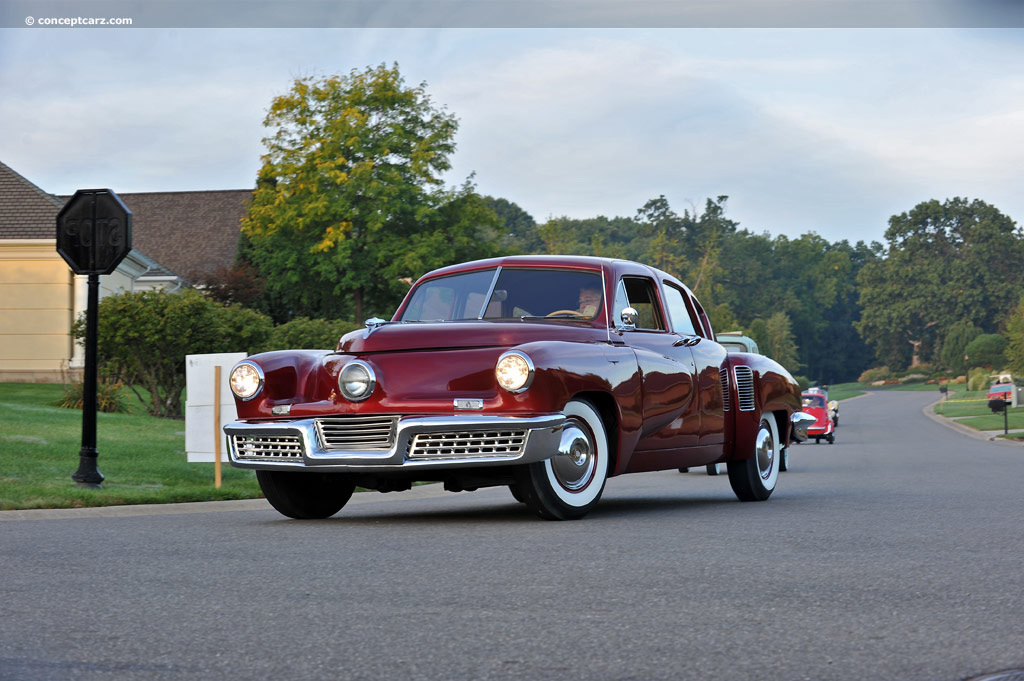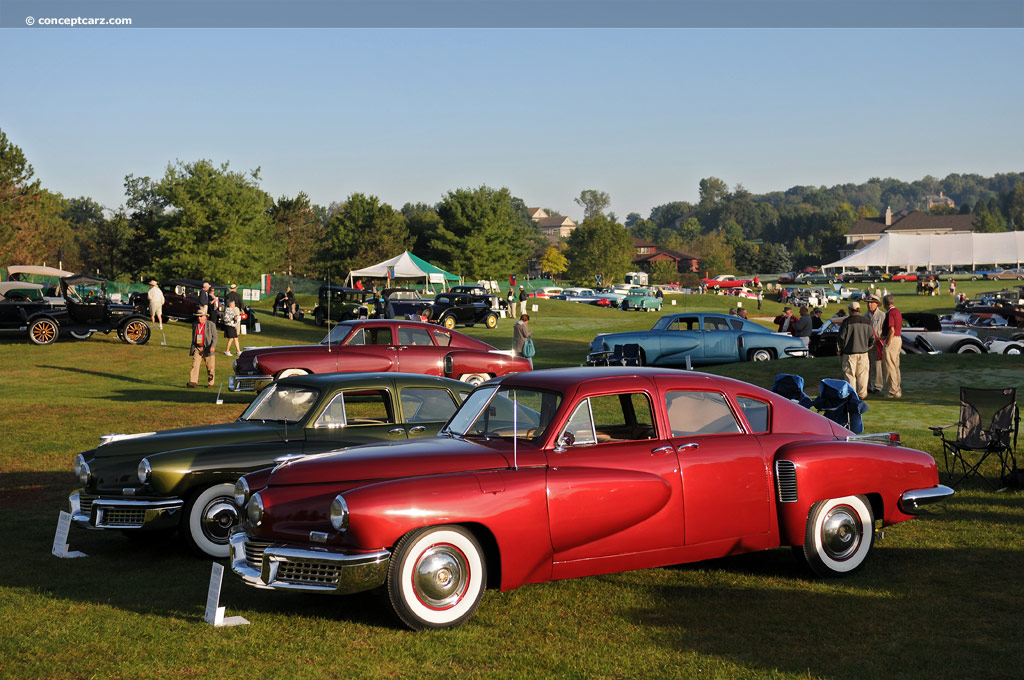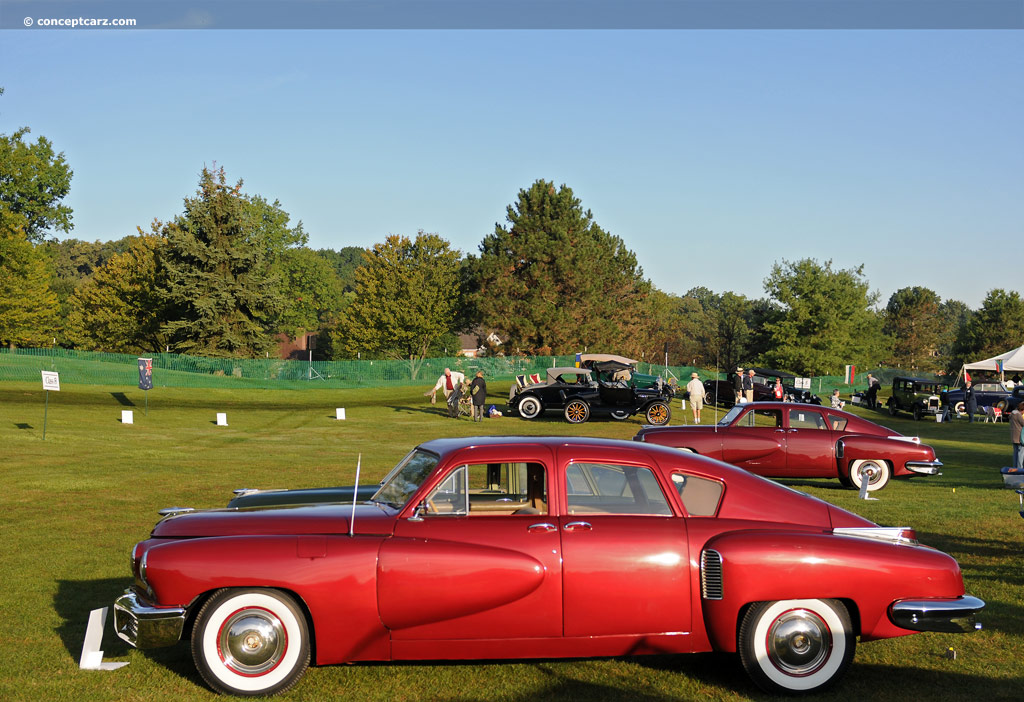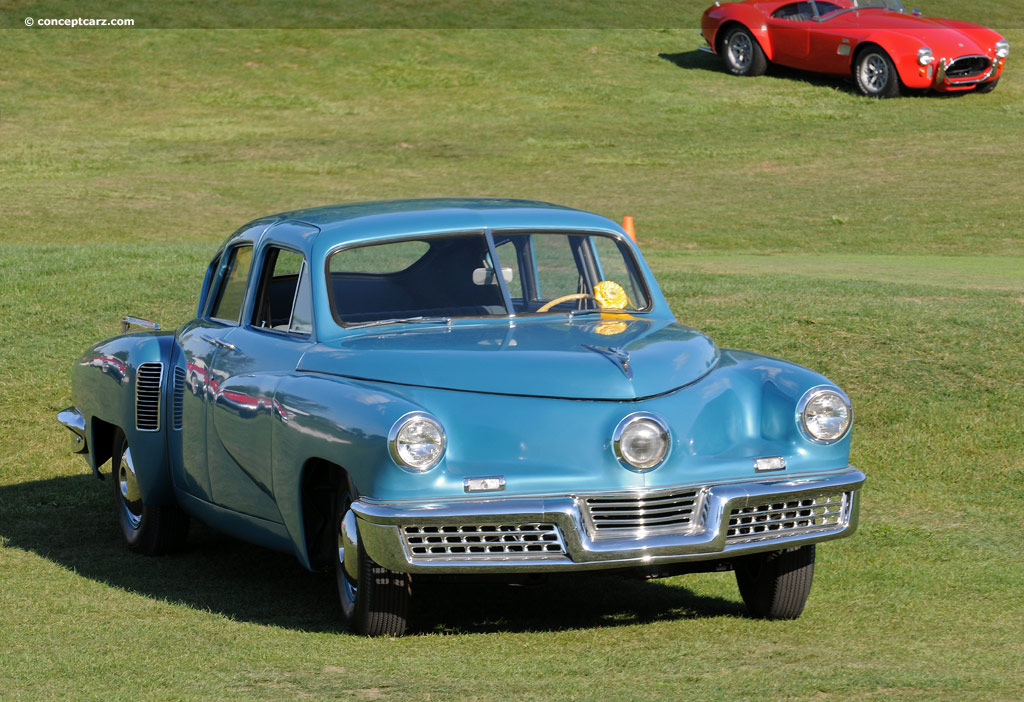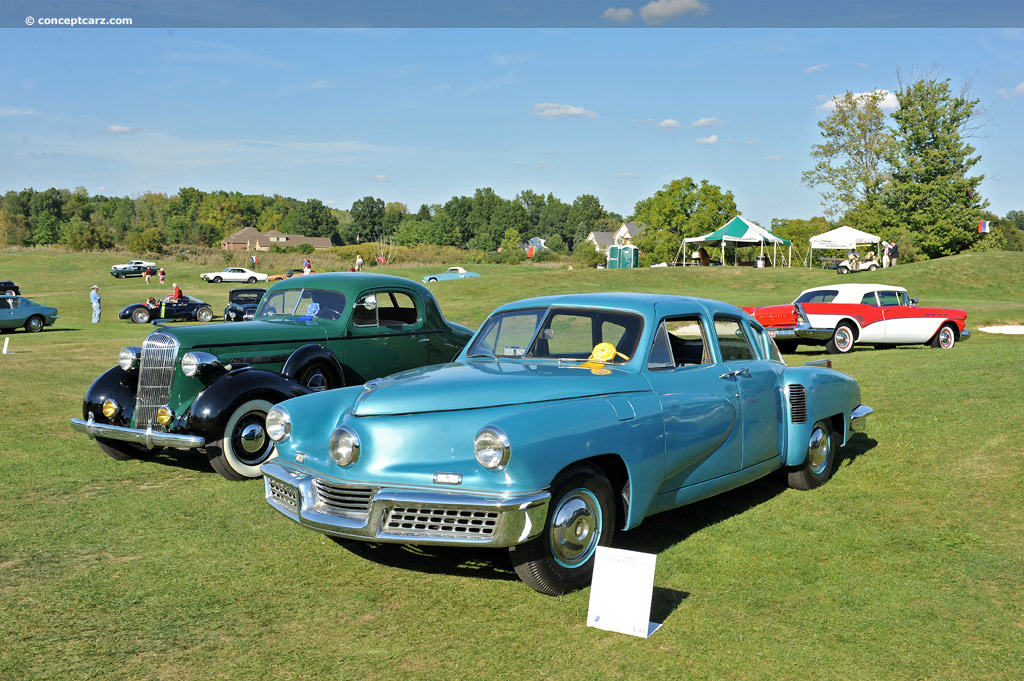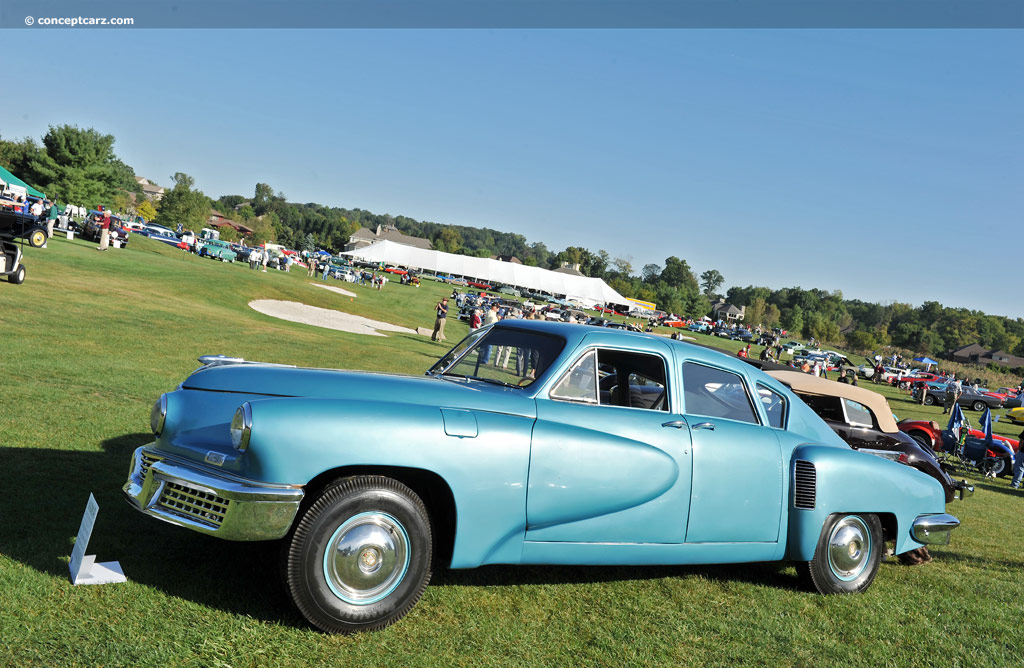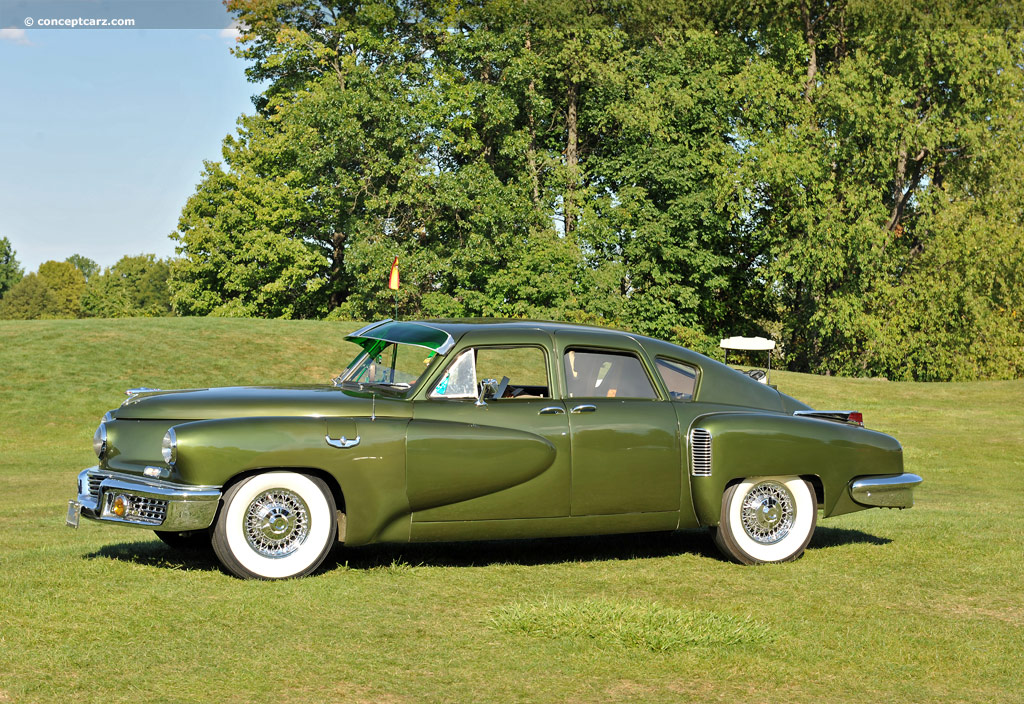Built by Preston Thomas Tucker, 51 examples were built, of which 47 survive now. The car is called the ‘Tucker 48’ (for its model year). It was called the ‘Tucker Torpedo’ as it was being designed and promoted.
Though only 51 examples were ever produced, the work of Preston Tucker has firmly cemented itself in history and a legacy that resounds with automotive enthusiasts from all corners of the world. After the close of the Second World War, Tucker began work on a new breed of automobiles that would become an engineering marvel and a masterpiece of design.
The work was done in a Dodge aircraft engine plant located in Chicago, which Tucker had purchased. Two clay mockups were created, both identical in mechanical dimensions but varying in style. A final version was crafted from the best of both clay models. The final version was then made into a metal prototype which was dubbed the ‘Tin Goose’. It was first shown to the public on June 19th, 1947.
Though the design was moving along steadily, the engine was plagued with problems. Its shortcoming was its excess noise, lack of power, and requiring multiple batteries in order to start. A 6 ALV 335 Franklin helicopter engine was used as a replacement. The engine was modified to utilize liquid cooling and the adaptation of a Cord 810 transmission. When the process was complete, the engine produced 166 horsepower and 372 foot pounds of torque.
The Tucker was a model of safety. The interior cockpit was given a padded dashboard and carried instrumentation that was grouped around the steering wheel. This meant that the protruding buttons and gauges would not cause damage to its occupants during an accident. The center-mounted headlight moved with the steering wheel providing light in the direction the vehicle would be traveling.
The front and rear seats could be interchanged which aided in the reduction of wear.
Soon after the Tucker automobiles began rolling off the assembly line in the spring of 1948, the Securities and Exchange Commission began investigating the allegations of mail fraud and other violations. The negative publicity sent the stock plummeting and the facility was forced to close. Tucker assemble a skeleton crew and was able to continue production for a few more months, lasting until March of 1949, at which time the company fell into receivership and its assets were seized.
